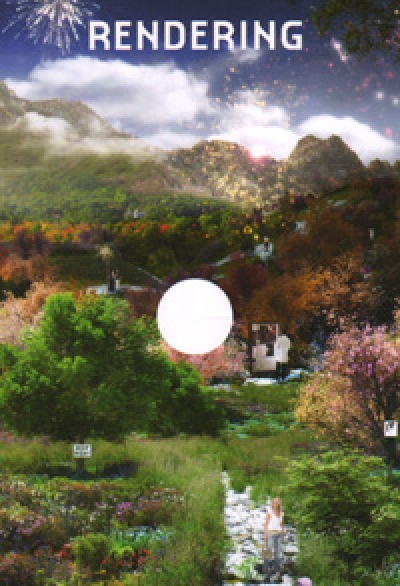
Rendering
As information is distributed and consumed at an increasingly rapid pace, one of the most effective (or at least pervasive) ways to communicate architectural ideas is through renderings. Typically a perspectival image that can be understood without any knowledge of architectural drawing conventions, the rendering derives power from its accessibility to a wide audience-hence its crucial role in design competitions, client presentations, press releases, and other such public forums.
While these architectural visualizations are certainly nothing new, advances in software and hardware have enabled renderings to be made faster and more realistic than ever before. This presents both an opportunity and a challenge. On the one hand, design concepts can now be tested and conveyed with an unprecedented degree of visual accuracy. Conversely, whether through omission, extreme dramatization, or even intentional fakery, architects now have the ability to realistically depict the impossible. Furthermore, both clients and public are beginning to expect photorealistic imagery even at the earliest stages of a project, when supposed 'realism' can oftentimes belie the fundamentally speculative nature of design. Given the importance of these images in mediating between architects and the people they ultimately serve, CLOG will critically assess the state of renderings today.
Contributors
Michael Abrahamson, Bertrand Benoit, Rachel Berger, Jon Brouchoud, Eric de Broche des Combes, Ilana Cohen, Margot Connor, Victoria Easton, Scott Farrar, Kurt W. Forster, Kevin Frank, Fabrizio Gallanti, Pablo Gallego-Picard, Donald P. Greenberg, Trond Greve Andersen, Benjamin Halpern, Kevin Hayes, John Hill, Julia van den Hout, Incorporated, Alfie Koetter, Labtop, LTL Architects, Nancy Lin, Carl Lostritto, Thomas Lozada, The Functionality - Andrew Lyon, Mansilla Y Tunon Arquitectos, Kyle May, Adam Nathaniel Mayer, Elizabeth Mcdonald, Samuel Medina, Mockitecture, The Office of PlayLab, Inc., Becky Quintal, Deepa Ramaswamy, Andrew Rasner, Jacob Reidel, Sam Roche, Philipp Schaerer, Julia Dorothea Schlegel, Dominik Sigg, Luca Silenzi, Aaron Craig Smith, Ben Strak, John Szot, Victor Tsu, Francisco Villeda, Joel Wenzel, Human Wu, and Christian Zollner.
out of stock!
http://www.clog-online.com/issues/clog-rendering/







